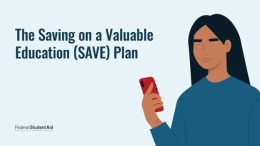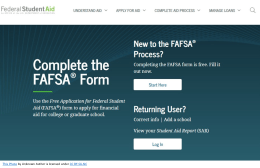This article highlights the value of studying abroad at Kansas State University. Earlier this month I met with the Director of Education Abroad and Office of International Programs, Mrs. Katelin Christianer-Donkers, to talk about the value that K-State students get from studying abroad. I asked Mrs. Christianer-Donkers several relevant questions, which she answered thoughtfully and thoroughly. The interview was truly insightful and helped me gain a great understanding of the study abroad programs offered here at K-State and now I can share with you! Throughout this article, I will be answering the eight questions I asked Mrs.Christianer-Donkers with her answers and the information I gained during the interview. In the article, I will present a question, and then an answer of why I asked that question alongside Mrs. Chritianer-Donker’s answer. This blog intends to educate and inspire K-State students about the value of studying abroad. I hope this article will give anyone who has an interest in the study abroad program the push they need to get started today.
1. How does studying abroad align with the academic goals and mission of the University?
The reason I asked my first question was to highlight ways in which studying abroad aligns with K-State. Mrs.Christianer-Donkers mentioned the recent announcement of the Next-Gen K-State Strategic and some specific ways it aligns with study abroad. She stated three imperatives, each of which she selected specifically because they aligned with her programs. Below, I cited Mrs. Christianer-Donker’s response to my question.
“The recent announcement of the Next-Gen K-State Strategic Plan shows distinct ways that Education Abroad is aligned with the University. The mission of Kansas State University is to foster excellent teaching, research, and service that develop a highly skilled and educated citizenry necessary to advancing the well-being of Kansas, the nation, and the international community. The University embraces diversity, encourages engagement, is committed to the discovery of knowledge, the education of undergraduate and graduate students, and the improvement in the quality of life and standard of living of those we serve.”
Imperative 2 is related to retention and graduation rates. Education Abroad participation is proven to positively affect these outcomes.
Imperative 3 is related to high-impact applied learning experience. Education Abroad has been singled out as one of the many opportunities available to students.
Imperative 5 is related to meeting the needs of learners, employers, and society which I believe has a global component, creating global citizens.” (K.C. Katelin. Personal Communication. October 5th, 2023)
2. What are the key advantages of studying abroad for students in terms of personal and academic growth?
The reason I asked this question is because I wanted to highlight the advantages a student can gain from studying abroad. For this question, Mrs. Christianer-Donkers focused on transferable skills students get from studying abroad. She mentioned that there are several value-adds a student gets from studying abroad. She also mentioned that studying abroad creates a more well-rounded and better-performing college student. After listening to what Mrs. Christianer-Donkers had to say, I couldn’t disagree with her response. The cause and effect of studying abroad seems very evident in students’ lives.
“When a student studies abroad, even for a short-term program, they gain several transferable, real-world skills. Students gain independence, adaptability, resilience, communication, flexibility, problem-solving, confidence, language acquisition, creativity, cultural awareness, and more. These skills will benefit students throughout their lives both personally, academically, and professionally. Anecdotal, I have heard many students say that education abroad reinvigorates their desire to learn and helps them complete their degree. The data backs this sentiment up by showing that participation in an education abroad program positively impacts retention and graduation rates in higher education.” (K.C. Katelin. Personal Communication. October 5th, 2023)
3. Are there specific programs or initiatives aimed at making study abroad more accessible to a diverse range of students?
The reason I asked this question is because I wanted to show that studying abroad could be a great way to diversify one’s experience in their respective programs. For this question, Mrs. Christianer-Donkers talked about two different initiatives for study abroad. The first was the creation of The First- Generation International Experience. This program is specifically for first-generation students here at K-State and is still in its early stages. The second initiative Mrs. Christianer-Donkers mentioned is the Benjamin A Gilman Scholarship for students who are eligible for Pell Grants. The scholarship is listed as a national one but is one K-State Education Abroad that takes great pride in helping students achieve. There are many sessions and workshops offered through the K-State study abroad to help students achieve this scholarship on their merit.
“Along with others, I want to touch on two specific initiatives that our office is working on. First, our Assistant Director, Brent Holliday, has been working closely with the First-generation Student Center to create the First-generation International Experience faculty-led program. The First-Generation International Experience is a collaboration between several KSU student services and academic units invested in the success of first-generation students at K-State. The project aims to provide financial support, pre-departure preparation, and academic relevance for KSU first-generation students who aspire to gain international experience while at K-State. Student-Centered Tuition Enhancement funds were used to support this program.” (K.C. Katelin. Personal Communication. October 5th, 2023)
“Another initiative is our work with the Benjamin A Gilman scholarship for students who receive the Federal Pell Grant. Sarah Hassle, Education Abroad Advisor, and Beth Powers, Director of Scholar Development and Undergraduate Research have worked together to develop a multi-step preparation process for students who are applying for this scholarship. The national scholarship application requires three essays and K-state offers multiple information sessions and writing workshops that can help students complete the application and receive feedback on their essays from knowledgeable staff at KSU.” (K.C. Katelin. Personal Communication. October 5th, 2023)
4. What resources and support does your office provide to help students choose the right study abroad program and navigate the application process?
The reason I asked this question is because I wanted to show that there is a great deal of support provided to K-State students. In answering this question, Mrs. Christianer-Donkers mentioned several different areas of support K-State offers. The University offers support through the faculty and staff, specifically Education Abroad Advisors which every student has access to. With the collaboration and help of the University’s employees, the K-state study abroad program thrives and strives to help students achieve their study abroad goals.
“Education Abroad advising structure is based on division by colleges, not location, which allows Education Abroad Advisors to form relationships with the Staff and Faculty in each college. Education Abroad Advisors therefore work closely with colleges related to curriculum equivalencies, understanding which programs are academically beneficial to students in that specific degree. Students can meet with their Education Abroad Advisor as many times as necessary and email them for assistance throughout the process from first interest to returning to campus to credit transfer after a program ends. Our website allows students to review the process in more detail. Students can search programs based on their priorities, whether classes are available for their major, location, extracurricular activities, traveling with other students, level of support abroad, and more. Their Education Abroad Advisor is there to help navigate the systems in place, knowing that each college and even some departments within a college work differently. The K-State Education Abroad Application provides information related to health and safety, course enrollment, funding, eligibility requirements, pre-departure considerations, identity abroad, and more.” (K.C. Katelin. Personal Communication. October 5th, 2023)
5. Do study-abroad countries have strong industries that apply to K-state majors?
In this question, I wanted to show the value that studying abroad could bring to the student’s professional career and chosen major. To showcase this Mrs. Christianer-Donkers provided specific examples of programs at the University College of Dublin, Ireland. The program in Ireland specifically is for Animal Science majors here at K-State and is a direct exchange between our University and Dublin.
“I think the better way to approach this question is to show a few examples of where the study abroad programs are directly tying the industry or academic content to something available in the location. University College Dublin is great for Animal Science majors, but anyone from the College of Agriculture can attend.
Another example of this direct tie to industry is faculty-led programs, which are KSU classes taught by KSU faculty in locations abroad. The faculty typically chooses their location specifically for the academic content. Faculty-led programs make up the largest portion of participation in education abroad at KSU currently, representing around 70% of the student experiences during the AY 22/23” (K.C. Katelin. Personal Communication. October 5th, 2023)
6. How does studying abroad enhance a student’s resume and job prospects, and do employers value this experience?
In this question, I wanted to highlight the benefits an employer sees from studying abroad. Mrs. Christianer-Donkers used research and facts to back her answer. She mentioned the skills that students attain from studying abroad are quite a value add for employers, but they won’t mean much if the student doesn’t understand how to utilize them. She then talked about students who can use their study abroad experience to their advantage. She mentioned that students who can communicate the impact and skills they gained from their study abroad experiences, would be able to show that extra value to employers, especially global employers.
“Research shows that applied learning activities, like Education Abroad, result in skill acquisition that is valuable to employers after graduation. Studying abroad does not automatically increase your chances of job placement, but how you include your experience abroad in your application materials and interview can have an impact. Students need to be able to speak professionally and thoughtfully about the skills they learned during their time abroad, showing the skills as transferable to the workplace. If a student can discuss the professional development of their time abroad, this high-impact experience becomes valuable to employers. This is especially true for companies that engage in global activities or business.” (K.C. Katelin. Personal Communication. October 5th, 2023)
7. Is the cost worth the experience, and is there financial aid to cover the gap?
In this question, I was straightforward and asked if the cost was worth the experience. Her response was simple; “Yes.” Mrs. Christian-Donkers mentions that studying abroad is something students feel strongly about when it comes to adding value to their education. She also mentioned that part of her office’s job is to help students find a way to achieve this and still graduate on time. During our conversation, she also mentioned that there are tons of scholarships to help students afford to study abroad, some of which are already underutilized.
“Anecdotally, yes, the cost is well worth the experience, the memories, the skills, and the relationships gained through education abroad. We regularly hear from graduates that one of their biggest regrets from their time at KSU was not studying abroad during college. Regardless of the length or location of your program, education abroad is a hugely impactful experience that students cherish and utilize in their life post-college, even if it’s not obvious. For students who are concerned about the funding aspect, we have resources on our website to assist with planning, budget building, and information about financial and scholarship opportunities.” (K.C. Katelin. Personal Communication. October 5th, 2023)
8. Will I still be able to graduate on time and study abroad?
My last and perhaps most important question was if students can still graduate on time and receive the experience of studying abroad. The reason I saved this one for last is because of its importance. As we all know college is expensive and is already a financial strain for many students. Mrs. Christianer-Donkers mentioned that this question varies for everyone, but it could just depend on how much you want it. What I mean by that is the earlier one plans, looks for scholarships, and schedules the better the chance the student can have the experience without adding extra school time. Lastly, she mentioned that her office is always ready to help students in any way they can.
“Yes, the Education Abroad Advisors work with students to understand the available course work abroad and assist students in navigating the Academic Approval Form that allows students to pre-approve classes with their KSU Academic Advisor before they ever commit to the program opportunity.” (K.C. Katelin. Personal Communication. October 5th, 2023)
In conclusion, with the collaboration of Mrs. Christainer-Donkers and I, we show Kansas State University students the value of studying abroad by answering eight questions: How does studying abroad align with the academic goals and mission of the University? What are the key advantages of studying abroad for students in terms of personal and academic growth? Are there specific programs or initiatives aimed at making study abroad more accessible to a diverse range of students? What resources and support do The Education Abroad and Office of International Programs provide to help students choose the right study abroad program and navigate the application process? Do study-abroad countries have strong industries that apply to K-state majors? How does studying abroad enhance a student’s resume and job prospects? Do employers value this experience/ Is the cost worth the experience? Is there financial aid to cover the gap, and will I still be able to graduate on time and study abroad? I hope this blog has informed you, the students of KSU, and has encouraged anyone who is thinking of studying abroad.

Jonathan Oury
Peer Financial Counselor I
Powercat Financial
www.k-state.edu/powercatfinancial





